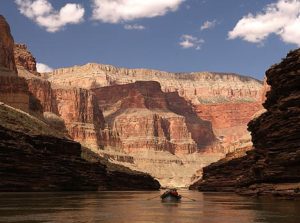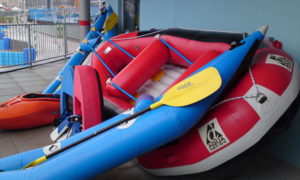As we research articles for camping and white water rafting to write and post on this website for our readers it occurred to us that many of our readers will  encounter bears from time to time. Dealing with Bears while Camping as they are hiking, setting up camp or traveling down the river can be scary. We felt that it would be a good idea to post some basic guidelines on this website about how to deal with bears if you encounter them.
encounter bears from time to time. Dealing with Bears while Camping as they are hiking, setting up camp or traveling down the river can be scary. We felt that it would be a good idea to post some basic guidelines on this website about how to deal with bears if you encounter them.
Bears are just about everywhere in the wild. You will see them on the road, along lakes and around camps and hiking trails. If you do not see them always keep your eyes and ears alert and look for signs that they are around.
Dealing with Bears while Camping
These guidelines are taken from a number of web sites and merged to try to provide the best advice available. While we are trying to help our readers, it is understood that there is no guarantee that any of these guidelines will work when you confront a bear. The best advice is to avoid them in the first place.
Avoiding Bear Problems
The best way to avoid bear problems is to take precautions to not attract them in the first place.
NEVER FEED BEARS
If you encounter a bear while in the outdoors, remain calm. DO NOT PANIC! Leave the area.
- Store foods out of a bear’s reach, in a vehicle or enclosed trailer.
- Remove all garbage and store it in enclosed vehicles or trailers.
- Use airtight or bear-proof containers.
- Post watch for entire event for bear activity.
- Respect all bears – they all can be dangerous.
- Never approach a bear.
- Be defensive – never surprise a bear.
- Learn about bears. Anticipate and avoid encounters.
- Know what to do if you encounter a bear.
- Each bear encounter is unique. No hard and fast rules can be applied when
- dealing with a potentially complex situation.
 The most dangerous bears are:
The most dangerous bears are:
- Bears habituated to human food.
- Females defending cubs.
- Bears defending a fresh kill.
- Cute, friendly, and apparently not interested in YOU.
About bears:
- Bears can run as fast as horses, uphill or downhill.
- They can climb trees, although black bears are better tree-climbers than grizzly bears.
- Bears have excellent senses of smell and hearing, and better sight than many people believe.
- Bears are strong. They can tear cars apart looking for food.
- Every bear defends a “personal space”. The extent of this space will vary with each bear and each situation; it may be a few metres or a few hundred meters. Intrusion into this space is considered a threat and may provoke an attack.
- Bears aggressively defend their food.
- All female bears defend their cubs. If a female with cubs is surprised at close range or is separated from her cubs, she may attack. An aggressive response is the mother grizzly’s natural defense against danger to her young.
- A female black bear’s natural defense is to chase her cubs up a tree and defend them from the base. However, she is still dangerous and may become aggressive if provoked.
If you encounter a bear at the roadside:
- Remain in your vehicle. Don’t get out even for a “quick photo”.
- Keep your windows up.
- Do not impede the bear from crossing the road.
- If you park to view bears at a distance, leave your car well off the road to avoid accidents.
IF you come in contact with a bear:
- DO NOT PANIC! DON’T APPROACH IT!
- Make loud noises, bang pans, yell, honk the horn of a vehicle, wave arms.
- Back away slowly.
- Get inside a vehicle and wait for the bear to leave, if it becomes aggressive.
- Most bears fear people and will leave when they see you. If a bear woofs, snaps its jaws, slaps the ground or brush, or bluff charges: YOU ARE TOO CLOSE! BACK AWAY!
- Barking dogs, bright lights and noisemakers will sometimes discourage bears from coming into an area.
Children should not:
- Run or play in areas with dense bush.
- Play unsupervised in bear country.
- Make animal-like sounds while hiking or playing.
- Approach bears, especially bear cubs.
- Be encouraged to pet, feed, or pose for a photo with bears, even if they appear tame.
If the bear refuses to leave:
- Be sure you have allowed the bear an escape route.
- Make loud noises to scare it away.
If the bear is treed:
- LEAVE IT ALONE! The bear will usually go away when it feels safe.
- Have people leave the area near the tree.
- Remove dogs from near the tree.
Your food and garbage:
- Odors attract bears. Reduce or eliminate odours from yourself, your camp, your clothes, and your vehicle.
- Don’t sleep in the same clothes you cook in.
- Store food so that bears cannot smell or reach it. Don’t keep food in your tent – not even a chocolate bar.
- Properly store and pack out all garbage.
- Handle and store pet food with as much care as your own.



